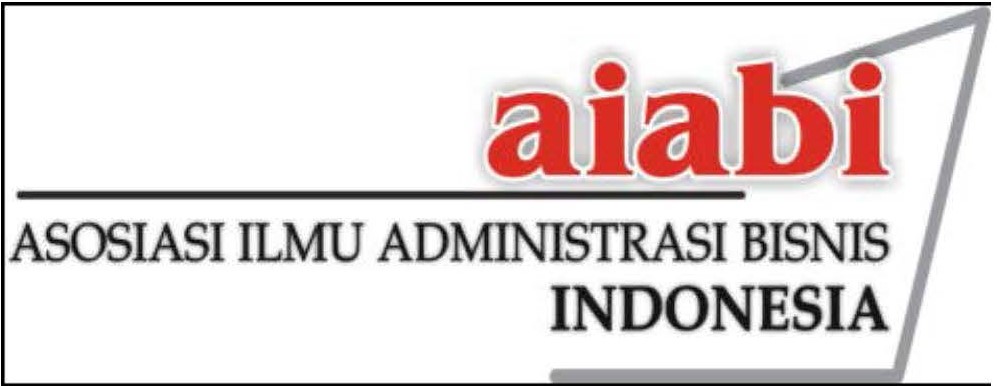CITY BRANDING KABUPATEN PANGANDARAN SEBAGAI KOTA WISATA
Abstrak
Pangandaran is one of the regions in Indonesia known as the City of Tourism because it has high natural and tourist potential. This potential is the basic material for a region in carrying out city branding so that it can achieve its brand equity The purpose of this study is to analyze how Pangandaran's city branding is viewed from a tourist perspective. In this study the method used is quantitative research. The sample in this study was 293 people obtained using accidental sampling withdrawal techniques. The data analysis technique used is the SEM method with the PLS approach. Research shows that Attitude has a direct and significant influence on Brand Preference. Brand Equity has a direct and significant influence on Brand Preference. Brand Image does not have a direct significant influence on Brand preference.
Pangandaran merupakan salah satu wilayah di Indonesia yang dikenal sebagai Kota Wisata karena memiliki potensi alam dan wisata yang tinggi. Potensi ini menjadi bahan dasar bagi suatu wilayah dalam melakukan city branding sehingga dapat mencapai ekuitas mereknya Tujuan dari penelitian ini adalah untuk menganalisis bagaimana city branding Pangandaran ditinjau dari perspektif wisatawan. Dalam penelitian ini metode yang digunakan adalah penelitian kuantitatif. Sampel pada penelitian ini adalah sebanyak 293 orang yang didapatkan dengan menggunakan teknik penarikan sampling aksidental. Teknik analisa data yang digunakan adalah metode SEM dengan pendekatan PLS. Penelitian memperlihatkan hasil bahwa Attitude memiliki pengaruh signifikan secara langsung terhadap Brand Preference. Brand Equity memiliki pengaruh signifikan secara langsung terhadap Brand Preference. Brand Image tidak memiliki pengaruh signifikan secara langsung terhadap Brand preference.
Kata Kunci
Teks Lengkap:
PDFReferensi
Aaker, D.A. 1991. Managing brand equity New York. Free Press: New York.
Aaker, D.A. 1996. “Measuring brand equity across products and markets”. California Management Review, 38 (3), 102-120.
Ashworth, G. J., & Voogd, H. 1994. Marketing and place promotion, in Gold J. R. and Ward, S.V. (eds) ‘Place promotion: The Use of Publicity and Marketing to Sell Towns and Regions’. John Wiley & Sons: Chichester, UK.
Ashworth, G. J., & Voogd, H. 1990. Selling the city: Marketing approaches in public sector urban planning London: Belhaven Press. Bagozzi, R. P., & Yi, Y. (1988). On the evaluation of structural equation models. Journal of the Academy of Marketing Science, 16(1), 74–94.
Barreda, A. 2014. “Creating brnad ewuity when using travel-related online social network web sites”. Journal of Vacation Marketing, 20 (4), 365-379.
Berg, L., Klassen, L.H., & Meer, J. 1990. Marketing metropolitan regions.Rotterdam: Euricur.
Biel, A.L. 1992. “How brand image drives brand equity”. Journal of Advertising Research, 32 (6), 6-12.
Boo, S., Busser, J., & Baloglu, S. 2009. “A model of customer-based brand equity and its application to multiple destinations”. Tourism Management, 30 (2), 219-231.
Chang, H. H., & Liu, Y.M. 2009. “The Impact of brand equity on brand preference and purchase intentions in the service industries”. The Service Industrial Journal, 29 (2), 1687-1706.
Cobb-Walgran, C.J., Ruble, C.A., & Donthu, N. 1995. “Brand equity, brand preference and purchase intent”. Journal of Advertising, 24 (3), 25-40.
Faircloth, J., Capella, L., & Alford, B. 2001. “The effect of brand attitude and brand image on brand equity”. Journal of Marketing Theory and Practice, 9 (3), 61-75.
Gil-Saura, L., Ruiz-Molina, M.E., Michel, G., & Corraliza-Zapata, A. 2013. “Retail brand equity: A model based on its dimensions and effects”. The International Review of Retail, Distribution and Consumer Research, 23 (2), 111-116.
Gomez, M., Alejandra, C., Fernandez, Arturo Molina, Evangelina A., 2018. “City Branding in European capitals: An analysis from the visitor perspective”. Journal of Destination Marketing & Management, 7 (Maret), 190-201.
Hakala, U., Svensson, J., & Vincze, Z. 2012. “Cunsomer-based brand equity and top-of-mind awareness: A cross-country analysis”. Journal of product and brand management, 21 (6), 439-451.
Hankinson, G., & Cowking, P. 1993. Branding in Action. McGraw-Hill: Maidenhead.
Hughes, H. L., & Allen, D. 2008. “Visitor and non-visitor images of central and eastern Europe: A qualitative analysus”. International Journal of Tourism Research, 10 (1), 27-40.
Jacobsen, B.P. 2012. “Place brand equity: A model for establishing the effectiveness of place brands”. Journal of Place Management and Development, 5 (3), 253-271.
Jogiyanto, H, M., & Abdillah, W. 2009. Konsep dan Aplikasi PLS (Partial Least Square) Untuk Penelitian Empiris. Badan Penerbit Fakultas Ekonomi: Yogyakarta.
Kavaratzis, M., & Ashworth, G.J. 2006. “City branding: An effective assertion of identity or a transitory marketing trick?”. Place branding and Public Diplomacy, 3 (2), 183-194.
Kavaratzis, Michalis. 2004. “From city marketing to city branding: Towards a theoretical framework for developing city brands”. Place Branding, 1 (1): 58-73.
Keller, K. L. 1993. “Conceptualizing, measuring and managing consumer-based brand equity”. Journal of Marketing, 57 (1), 1-22.
Kladou, S., & Kehagias, J. 2014. “Assesing destination brand equity: An integrated approach”. Journal of Destination Marketing and Management, 3 (1), 2-10.
Koneenik, M., & Gartner, W.C. 2007. “Customer-based brand equity for a destination”. Annals of tourism research, 34 (2), 400-421.
Kotler, P., & Armstrong, G. 1996. Principles of marketing. Prentice-Hall: New Jersey, NJ.
Kotler, P., Asplund, C., Rein, I., & Haider, D. H. 1999. Marketing places Europe: How to attract investments, industries, residents and visitors to cities, communities, regions and nations in Europe. Financial Times Management: London.
Kotler, P., Asplund, C., Rein, I. & Heider, D. 1999. Marketing Places Europe: Attracting Investments, Industries, Residents and Visitors to European Cities, Communities, Regions and Nations. Pearson Education: London, UK.
Lucarelli, A. 2012. “Unraveling the complexity of ‘city brand equity’: A threedimensional framework”. Journal of Place Management and Development, 5 (3), 231–252.
Malhotra, Naresh K. 2015. Essential of Marketing Research: A Hands-On Orientation. Essex: Pearson.
Marceau, J. 2008. “Introduction: Innovation in the city and innovative cities”. Innovation: Management, Policy & Practice, 10 (2–3), 136–145.
Middleton, A.C. 2011. ‘City branding and inward investment’. , in: Dinnie, K. (Ed.). (2011). City branding theory and cases (347–340). New York, NY: Palgrave Macmillan, 15–25.
Page, S. B., Stone, M. M., Bryson, J. M., & Crosby, B. C. 2015. “Public value creation by cross-sector collaborations: A framework and challenges of assessment”. Public Administration, 93(3), 715–732.
Sahin, S., & Baloglu, S. 2014. “City branding: Investigating a brand advocacy model for distinct segments”. Journal of Hospitality Marketing & Management, 23(3/4), 239–265.
Sartori A., Mottironi, C., & Corigliano, M.A. 2012. “Tourist destination brand equity and internal stakeholders: An empirical research”. Journal of Vacation Marketing, 18(4), 347–340.
Schmitt, B. 1999. “Experiential marketing”. Journal of Marketing Management, 15 (1-3), 53-67.
Trueman, M.M., Klemm, M. Giroud, A. & Lindley, T. 2001. Bradford in the premier league? A multidisciplinary approach to branding and re-positioning a city. Bradford University, School of Management: Bradford, UK.
Tynan, C., & McKechnie, S. 2009. “Experience marketing: A review and reassessment”. Journal of Marketing Management, 25 (5-6), 501-517.
Vermeulen, M. 2002. ‘The Netherlands, holiday country’, in Hauben, T., Vermeulen, M & Patteeuw, V. (eds), ‘City Branding: Image Building and Building Images’ NAI Uitgevers, Rotterdam, The Netherlands.
Wahab, Salah. 2003. Manajemen Kepariwisataan. Jakarta: Pradnya Paramitha.
Ward, S.V. 1998. Selling Places: The Marketing and Promotion of Towns and Cities 1850-2000. E & FN Spon: London, UK.
Willmott, M., & Nelson, W. 2003. Complicated lives, sophisticated consumers, intricate lifestyles, simple solution. John Wiley & Sons: Chichester.
Yoo, B., Donthu, N., & Lee, S. 2000. “An examination of selected marketing mix elements and brand equity”. Journal of the Academy of Marketing Science, 28(2), 195-211.
Zeithaml, V.A. 1988. “Consumer perception of price, quality, and value: A means-end model and synthesis of evidence”. Journal of Marketing, 52(3), 2–22.
Zenker, S. 2011. “How to catch a city? The concept and measurement of place brands”. Journal of Place Management and Development, 4(1), 40–52.
Zenker, S., & Beckmann, S. C. 2013. “Measuring brand image effects of flagship projects for place brands: The case of Hamburg”. Journal of Brand Management, 20(8), 642–655.
DOI: https://doi.org/10.24198/adbispreneur.v4i1.19813
Refbacks
- Saat ini tidak ada refbacks.









